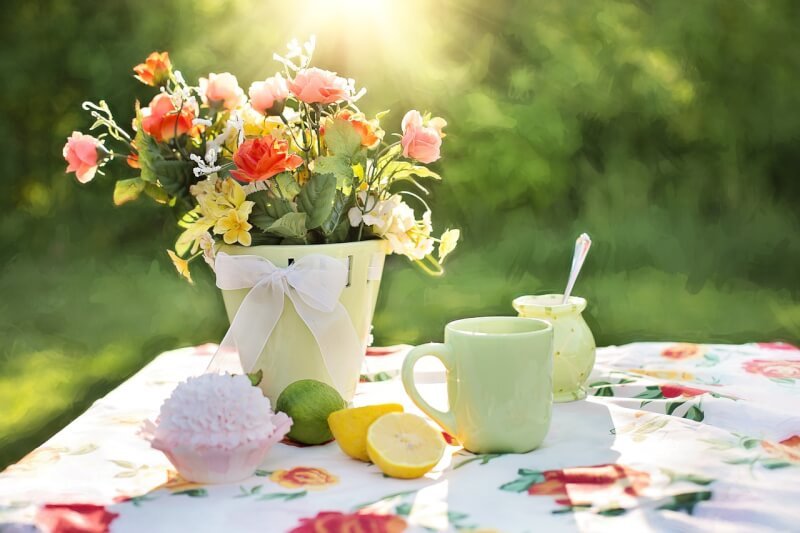Are you looking for a simple way to add a touch of nature to your urban space? Creating a green wall might be the perfect solution for you! Whether you have a small balcony or a spacious backyard, this article will provide you with easy steps to bring some greenery into your surroundings. From choosing the right plants to setting up irrigation systems, you will discover how simple it can be to create a beautiful living wall that will transform your urban environment into a lush and inviting oasis.

Choosing the Right Location for Your Green Wall
Assessing sunlight and shade availability
When choosing a location for your green wall, it’s crucial to consider the amount of sunlight and shade it will receive. Most plants require several hours of direct or indirect sunlight each day to thrive. Observe the area throughout the day to determine if it receives enough sunlight. Additionally, consider the presence of nearby buildings or trees that may cast shadows on the wall. Strike a balance between sunlight and shade to ensure the plants’ optimal growth.
Considering access to a water source
Your green wall will need a reliable water source for irrigation. Assess the proximity of a water supply, such as a hose or outdoor faucet, to your chosen location. The easier it is to access water, the more convenient it will be to maintain your green wall’s hydration needs. If your chosen spot is far from a water source, you may need to install a water line specifically for your green wall.
Examining structural support
Before proceeding, it’s essential to evaluate the structural integrity of the wall where you plan to create your green wall. Ensure that the wall can bear the weight of the plants, growing medium, and irrigation system. Seek professional advice if you have any concerns about the wall’s load-bearing capacity or its ability to withstand environmental forces such as wind and rain.
Taking into account available space
Consider the available space you have for your green wall. Measure the height and width of the wall to determine the maximum dimensions for your living wall project. In smaller spaces, consider using vertical systems or modular panels that can be easily mounted on the wall. Utilizing the available space efficiently will help you create a visually appealing and functional green wall.
Selecting the Suitable Plants for Your Green Wall
Choosing plants that thrive in urban environments
When selecting plants for your green wall, it’s important to choose ones that can thrive in urban environments. Urban areas often have higher pollution levels, limited soil space, and fluctuating temperature conditions. Opt for plants known for their ability to withstand these challenges, such as ferns, succulents, and air plants. Research the specific needs and adaptability of different plant species to ensure successful growth in your green wall.
Considering the wall’s orientation and exposure
The orientation of the wall and its exposure to sunlight will influence the plant selection. Walls that face the north may receive less direct sunlight, while those facing south may receive more intense sunlight. Take note of the wall’s orientation and choose plants accordingly. Some plants, like sun-loving herbs or flowering plants, will require more sunlight, while shade-tolerant ferns or mosses may be more suitable for walls with limited exposure to direct sunlight.
Opting for low-maintenance and drought-tolerant plants
To simplify the maintenance of your green wall, opt for low-maintenance and drought-tolerant plants. These plants are more resilient and require less frequent watering. Succulents, such as jade plants or echeverias, are excellent choices for their ability to store water in their leaves. Additionally, consider using plants that have similar water requirements to ensure even watering across the entire green wall.

Preparing the Wall Surface
Cleaning the wall surface
Before installing your green wall, it’s important to clean the wall surface. Remove any dirt, dust, or debris that may interfere with the proper adhesion of the plants and growing medium. Scrub the wall gently using a brush and a mild detergent solution to remove any stains or residues. Rinse the wall thoroughly with clean water and allow it to dry completely before proceeding.
Repairing any damages
Inspect the wall surface for any damages, cracks, or loose paint. Repair and patch up any cracks or holes using a suitable wall filler or sealant. Smooth out the surface and ensure it is stable and even before proceeding. Take the time to address any structural issues, as the integrity of the wall is crucial for the long-term stability and health of your green wall.
Applying a waterproofing membrane if necessary
If your wall has a high water absorption rate or if you anticipate excessive moisture due to irrigation, it’s recommended to apply a waterproofing membrane. This membrane adds an extra layer of protection, preventing water from seeping into the wall and causing damage. Follow the manufacturer’s instructions for correct application, ensuring that the entire wall surface is adequately covered with the waterproofing membrane.
Installing the Irrigation System
Deciding on the type of irrigation system
Selecting the right irrigation system for your green wall is essential for proper plant hydration. There are various options to consider, including drip irrigation, micro-sprinklers, or a hydroponic system. Drip irrigation is a commonly used method, delivering water directly to the base of the plants, minimizing water waste and ensuring efficient watering. Research each system to determine the most suitable option for your green wall.
Placing irrigation lines and drippers
Once you have decided on the irrigation system, carefully plan the placement of irrigation lines and drippers. Ensure that each plant receives adequate water by strategically positioning the lines and drippers near the base of the plants. Consider the spacing between plants and adjust the layout of the irrigation system accordingly. Take care to avoid placing drippers directly on plant leaves, as it may lead to fungal diseases.
Connecting the system to a water source
Connect the irrigation system to a reliable water source. The connection may involve attaching the system to an existing outdoor faucet or installing a separate water line specifically for your green wall. Take into account the pressure and flow rate of the water source to ensure that the irrigation system operates effectively and uniformly across the entire green wall.
Adding a timer or controller for scheduling
To simplify and automate the watering process, consider adding a timer or controller to your irrigation system. A timer or controller allows you to schedule specific watering times and durations, ensuring consistent and regular hydration for your plants. This feature is especially beneficial if you have a busy schedule or if you tend to forget watering your green wall regularly.

Creating a Growing Medium for the Plants
Choosing a suitable growing medium
Selecting the right growing medium is crucial for the success of your green wall. The growing medium should provide sufficient support for plant roots while promoting proper drainage and aeration. A quality potting mix or a specialized green wall substrate can provide the necessary balance of water retention and drainage capabilities. Avoid using heavy soils or compost that can become compacted and hinder plant growth.
Ensuring proper drainage
To prevent waterlogging and root rot, ensure proper drainage within the growing medium. Incorporate materials like coarse sand or perlite into the growing medium to improve its drainage capabilities. Additionally, ensure that the modular panels or containers used to hold the growing medium have drainage holes to allow excess water to escape.
Mixing in organic matter and nutrients
Amend the growing medium with organic matter and nutrients to provide the necessary nutrients for plant growth. Adding compost or well-rotted manure will enrich the soil and improve its fertility. Consider incorporating slow-release fertilizers or organic fertilizers into the growing medium to provide a steady supply of nutrients over an extended period. Mix these additives thoroughly into the growing medium before planting your green wall.
Planting Your Green Wall
Arranging the plants in a desired pattern
Before planting, carefully plan and arrange the plants in a desired pattern. Consider the growth habits and sizes of the selected plants, ensuring that they complement each other visually and do not overcrowd or shade one another. Experiment with different arrangements and layouts to achieve an aesthetically pleasing and balanced green wall.
Creating pockets or containers for each plant
To securely hold each plant in place on the wall, create individual pockets or containers within the growing medium. Modular panel systems typically have pre-designed pockets. If using containers, ensure they have drainage holes and can be securely attached to the wall. Position each pocket or container according to your planned arrangement, leaving enough space for the plants’ root systems to develop and expand.
Transferring plants carefully into their designated spots
Gently remove each plant from its nursery container or propagate if using cuttings. Be mindful of the delicate root system and handle the plants with care. Place each plant into its designated pocket or container, ensuring that it is positioned at the same depth as it was in its original container. Minimize disturbance to the roots to avoid transplant shock and encourage proper establishment in the green wall.
Securing the plants in place
Once the plants are in their designated spots, ensure they are securely anchored in place. Adjust and pack the growing medium around the base of each plant to provide stability and prevent shifting. Use mesh or wire to secure trailing or climbing plants to the wall surface if needed. Check that all plants are firmly attached and that their growing medium is consistent to avoid any potential instability.
Caring for Your Green Wall
Watering the wall adequately
Proper watering is vital for the health and vitality of your green wall. Monitor the moisture level of the growing medium regularly and adjust the watering schedule as needed. Avoid overwatering, as it can lead to root rot, fungal diseases, and unstable plant growth. Water the wall thoroughly, allowing the water to reach the roots, and ensure any excess water drains out of the growing medium.
Fertilizing the plants regularly
To maintain the vigor of your green wall, incorporate regular fertilization into your care routine. Consider using slow-release fertilizers, organic liquid fertilizers, or compost tea to provide nutrients to the plants. Follow the recommended application rates for the selected fertilizers and adjust the frequency based on the plant’s growth and nutritional requirements.
Pruning and trimming as necessary
As your green wall grows, it’s essential to prune and trim the plants to maintain their shape and prevent overcrowding. Remove any dead or yellowing leaves regularly to promote healthy growth. Trim back long or leggy stems to encourage bushier growth and maintain a compact appearance. Regular pruning not only enhances the aesthetic appeal of your green wall but also promotes air circulation and prevents the spread of pests and diseases.
Monitoring for pests and diseases
Regularly monitor your green wall for any signs of pests or diseases. Check the leaves for discoloration, spots, or unusual growth patterns. Inspect the plants for pests such as aphids, mealybugs, or spider mites. Act promptly at the first sign of a problem to prevent infestations or diseases from spreading. Consider using organic pest control methods or consult with a professional if the issue becomes severe.
Training and Pruning the Plants
Directing the growth of the plants
Training and directing the growth of the plants is crucial to maintain the desired shape and structure of your green wall. For climbing or vining plants, regularly guide the tendrils or stems along the wall surface or supporting mesh. Consider using ties or clips to secure the plants as they grow. Encourage the plants to grow in the desired direction to create the desired visual impact.
Pruning to encourage bushier growth
To promote bushier growth and a denser appearance, prune your green wall plants regularly. Trim back any excessively long stems or branches to redirect the plant’s energy towards lateral growth. This encourages the plants to fill out and create a lush and vibrant wall. Pruning also allows for better air circulation, reducing the risk of fungal diseases and maintaining overall plant health.
Trimming to maintain desired shape
Maintain the desired shape of your green wall by trimming the plants as needed. Create crisp, clean lines along the edges of the wall to achieve a neat and well-manicured appearance. Use sharp and clean pruning tools to ensure smooth cuts and minimize the risk of plant damage or disease transmission. Regular trimming will help your green wall maintain its aesthetic appeal throughout the seasons.
Maintaining the Irrigation System
Checking and cleaning the drippers regularly
Regularly inspect and clean the drippers of your irrigation system to ensure they are functioning correctly. Drippers can clog over time due to mineral deposits or debris, affecting the water flow. Gently remove each dripper and flush it with clean water to remove any blockages. If necessary, use a small brush or toothpick to clean the openings meticulously. Periodically replace any damaged or worn-out drippers to maintain efficient watering.
Adjusting the water flow and pressure if needed
Monitor the water flow and pressure of your irrigation system regularly. Observe the distribution of water across the green wall and check for any uneven watering or dry spots. Adjust the water flow or pressure by manipulating the system’s valves or adjusting the faucet accordingly. Ensure that each plant receives an adequate amount of water without excessive runoff or waste.
Clearing any blockages or clogs
If you notice any blockages or clogs in the irrigation lines, clear them promptly to ensure uninterrupted water flow. Use a small wire or pipe cleaner to unclog any debris obstructing the system. Flush the lines with clean water to remove any loosened debris. Regular maintenance of the irrigation system will prevent issues such as uneven watering or malfunctioning drippers.
Enhancing Your Green Wall’s Aesthetics
Adding decorative elements or sculptures
To enhance the aesthetic appeal of your green wall, consider incorporating decorative elements or sculptures. Place visually interesting items, such as small statues, hanging planters, or colorful ornaments, amidst the plants. These additions will add depth and visual interest to your green wall, making it a focal point in your urban space.
Including colorful or flowering plants
Introduce pops of color to your green wall by including plants with vibrant foliage or flowers. Choose flowering perennials, annuals, or colorful foliage plants to create an eye-catching display. Scatter these plants strategically throughout the green wall, taking into account the overall color scheme and desired visual impact. The addition of colorful or flowering plants will make your green wall a truly captivating feature.
Using climbing plants for vertical interest
Climbing plants add vertical interest and a sense of movement to your green wall. Choose fast-growing climbers such as ivy, jasmine, or clematis to cover larger areas and create a lush and verdant backdrop. Train the climbers to follow a specific pattern or cover an entire section of the wall. The cascading foliage and delicate blooms of climbing plants will transform your green wall into a living tapestry.
Creating a green wall in your urban environment may seem daunting, but with careful planning and attention to detail, it can be a rewarding project. By assessing the location, selecting suitable plants, preparing the wall surface, installing an irrigation system, creating a proper growing medium, and caring for the plants, you can create a stunning green wall that adds beauty and serenity to your outdoor space. So go ahead, embark on this green journey and transform your urban space into a living oasis!


